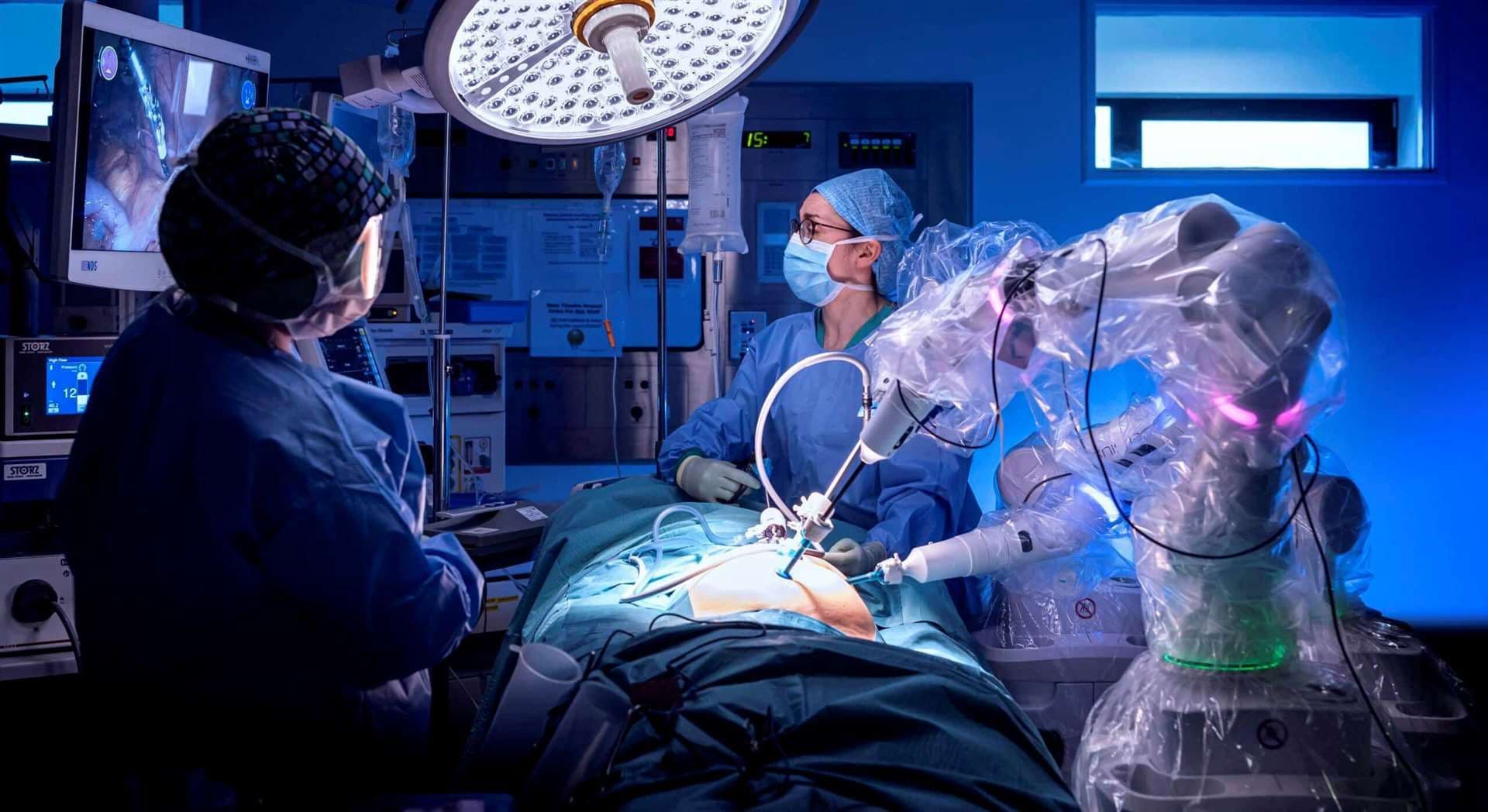Scalpel Meets Silicon: The Rise of AI and Robotics in Surgery
Step inside the operating rooms of the future, where artificial intelligence and robotics are shattering the boundaries of traditional medicine. This engaging exploration reveals how intelligent machines are transforming every facet of surgery; from precision-guided incisions and customized treatment plans to minimally invasive procedures that heal faster than ever before. Discover the breakthroughs revolutionizing brain, heart, spine, and reconstructive operations. Uncover the ethical questions at the heart of this technological leap, and glimpse the coming era of semi-autonomous surgical robots. Whether you’re fascinated by medical innovation or simply curious about how AI is rewriting the art of healing, Beyond the Scalpel is your guide to the next frontier in human health.

In recent decades, the operating room has undergone a remarkable transformation. The days when a surgeon’s skill and a handful of assistants defined the limits of medical possibility are giving way to something far more extraordinary. Today, artificial intelligence (AI) and robotics are reshaping surgery, turning what was once unimaginable into safe, precise, and efficient realities.
"We are no longer bound by the limitations of the human eye and hand; AI helps us see what was once invisible and do what was once impossible."
Modern surgical care now transcends human expertise alone. Intelligent machines analyze, learn, and assist in ways that empower surgeons to reach unprecedented levels of precision and improve patient outcomes.
Precision Beyond Human Capability
At the heart of this revolution lies AI’s incredible ability to process vast amounts of medical data in real time. Sophisticated algorithms interpret imaging scans; MRI, CT, ultrasound and transform them into 3D representations of a patient’s anatomy.
This gives surgeons a roadmap with millimeter-level accuracy, dramatically reducing the risk of error.
"It’s like having a GPS for the human body," says one surgeon. "It guides every move with absolute clarity."
Some standout capabilities:
- Robotic surgical systems such as the da Vinci Surgical System magnify a surgeon’s precision while minimizing tremors.
- Robots expertly maneuver instruments through tiny incisions in delicate spaces, especially during prostate and gynecologic surgeries.
- Patients benefit from less bleeding, fewer complications, and shorter recovery times.
Personalized Surgical Planning
One of AI’s most transformative contributions is the ability to create customized surgical plans tailored to each patient’s unique anatomy and risks.
Imagine preparing for brain tumor removal: AI software highlights critical areas of the cortex, predicts the safest approach, and even simulates how different techniques might affect function. In orthopedic surgery, AI models design patient-specific implants and forecast how bones will align over time.
This approach ensures no two operations are ever the same and each patient receives truly personalized care.
"With AI, we can move from standardized procedures to precision-guided interventions designed just for you."
Enabling Minimally Invasive Techniques
AI and robotics are ushering in a new era of minimally invasive procedures, transforming patient expectations. Smaller incisions, less pain, and faster healing have become the norm rather than the exception.
Highlights of minimally invasive AI-driven surgery:
- AI-enhanced laparoscopic systems detect hidden structures and warn surgeons in real time.
- In cardiac surgery, robotic tools perform delicate valve repairs on a beating heart, avoiding the trauma of open-heart surgery.
- Shorter hospital stays and quicker recovery times benefit both patients and healthcare providers.
"Patients go home sooner, heal faster, and feel better—all thanks to intelligent technology."
Driving Operational Efficiency
The impact of AI and robotics isn’t confined to the operating table. Behind the scenes, these systems are making hospitals more efficient and responsive.
- Intelligent scheduling algorithms accurately predict how long procedures will take, reducing costly delays.
- Robotics automate tasks like instrument sterilization and inventory management.
- Predictive analytics spot potential complications early, enabling proactive care rather than reactive crisis management.
"AI allows us to focus less on logistics and more on patients."
Transforming Specialized Fields
Across every specialty, AI is setting new standards of excellence:
- Neurosurgery: Advanced navigation maps the brain in exquisite detail, protecting critical functions.
- Cardiac Surgery: Predictive models and robotic arms enhance precision in bypasses and valve replacements.
- Orthopedics: Robotic-assisted joint replacements achieve better alignment and longer-lasting results.
- Plastic Surgery: AI simulations let patients preview aesthetic outcomes before committing to procedures.
- Spine Surgery: Robots ensure precise placement of implants and alignment in spinal fusions.
"From brain to bone, AI is transforming how we heal."
Ethical and Regulatory Considerations
While the potential is vast, these breakthroughs raise important questions:
- Accountability: Who is responsible if AI makes a critical error?
- Data Security: How do we protect sensitive patient information as machines process massive datasets?
- Bias: How do we prevent AI from inheriting biases in training data?
Healthcare leaders and regulators are working to build clear guidelines so AI becomes a trusted partner; not a replacement for skilled clinicians.
"Technology must always serve humanity, not the other way around."
The Future: From Assistance to Autonomy
Looking ahead, AI and robotics will continue evolving from assistance toward semi-autonomous surgery.
In the coming years, expect:
- Semi-autonomous robots performing parts of procedures independently
- AI-powered simulators training surgeons in virtual operating rooms
- Continuous learning systems refining techniques through millions of case analyses
"The scalpel will stay in human hands, but AI will guide it with superhuman intelligence."
Conclusion
AI and robotics are not just tools; they are a profound evolution in how we deliver care. By blending human skill with machine intelligence, modern surgical procedures are safer, faster, and more personal than ever before.
This is the dawn of a new era; where surgery is no longer limited by the eye, the hand, or even human intuition alone. Instead, it is guided by a partnership that elevates the art of healing to extraordinary heights.
